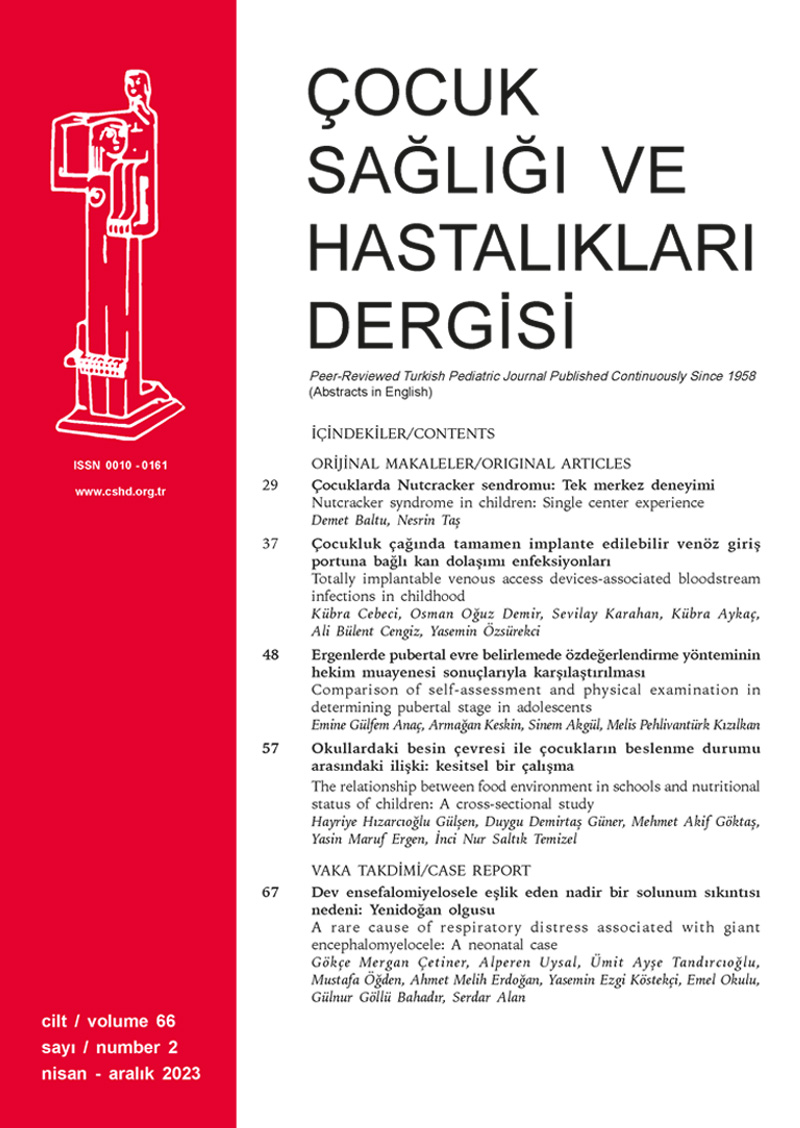Öz
Okullar çocukların sağlıklı beslenme davranışının geliştirilebileceği ortamlardır. Okullarda sunulan öğünler öğrencilerin öğrenme kapasitesi ve sosyal etkileşimi üzerinde olumlu etkiler sağlayabilir. Bu çalışma ile okul çağındaki çocukların okuldaki beslenme çevresinin (öğretim kurumunun özellikleri, okulda geçen süre, öğün sayısı, okulda yemek hizmeti sunulması, öğünün sağlanma yeri) beslenme durumu ve büyüme üzerine etkileri araştırıldı. Kesitsel tek merkezli bu çalışmaya 268 çocuk dahil edildi. Çocuklar beden kitle indeksi (BKİ) Z skorlarına göre “malnütrisyon ve malnütrisyon riski grubu”, “kiloluluk/obezite grubu” ve “normal BKİ grubu” olarak gruplandığında; özel okula gitme sıklığı, okulda geçirilen süre, okulda yemek hizmeti varlığı, öğünün temin edilme şekilleri benzerdi. Kısa boylu ve normal boylu çocuk grupları arasında aynı parametreler açısından fark yoktu. Kısa boylu çocuklarda kronik hastalık oranının fazla (p=0.007), iki ve üzerinde öğün yapma sıklığının az (p=0.022) olduğu gösterildi. Özel okullara gidenlerde okul yemekhanesinde yemek tüketiminin (p<0.001) ve iki öğünden fazla öğün tüketiminin (p<0.001), devlet okullarına gidenlerde ise evden getirilen öğün tüketiminin daha sık olduğu saptandı. On yaş üzerindeki çocuklarda, özellikle lise grubunda (p=0.005), kantinden beslenmenin daha sık olduğu görüldü. Bu sonuçlar ile okullarda sunulan öğün sayısının fazla oluşunun kronik hastalığı olan çocuklar başta olmak üzere okul çocuklarının beslenme durumunda olumlu etkilerinin olabileceğini düşündürmüştür. Çalışmamızda elde ettiğimiz okulda geçirilen sürenin uzun oluşu, kısa boylu çocukların okulda iki ve üzerinde öğün yapma sıklığının az oluşu, ergenlikle birlikte kantinden besin tüketiminin artışı gibi bulgular okulda kaliteli ve sağlıklı beslenme desteğinin önemine dikkat çekmektedir.
Anahtar Kelimeler: okul, malnütrisyon, öğün, besin çevresi








